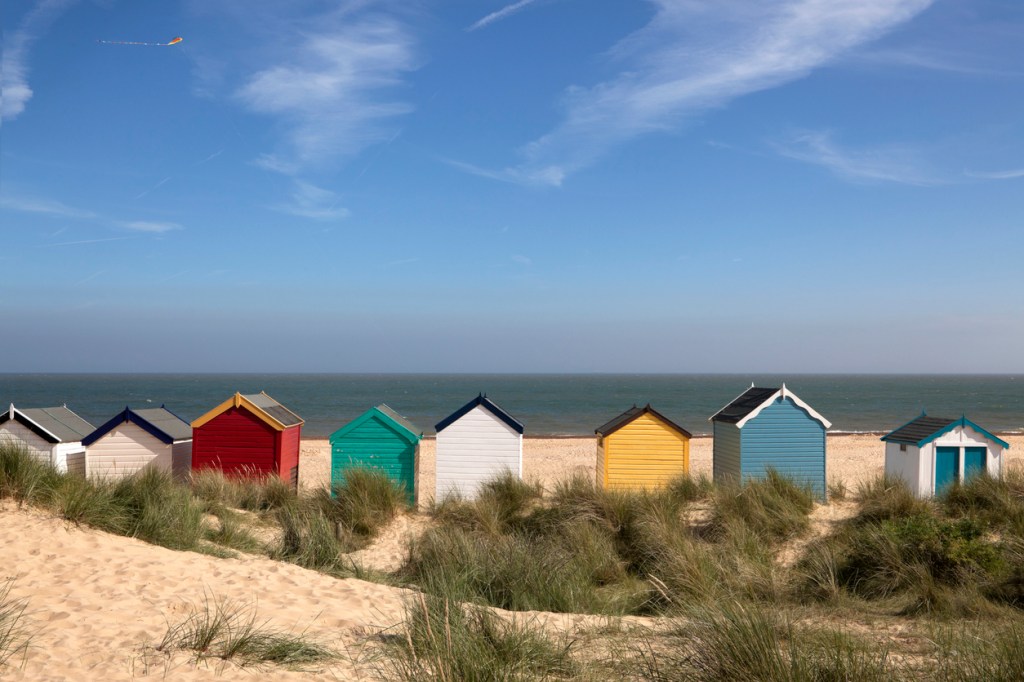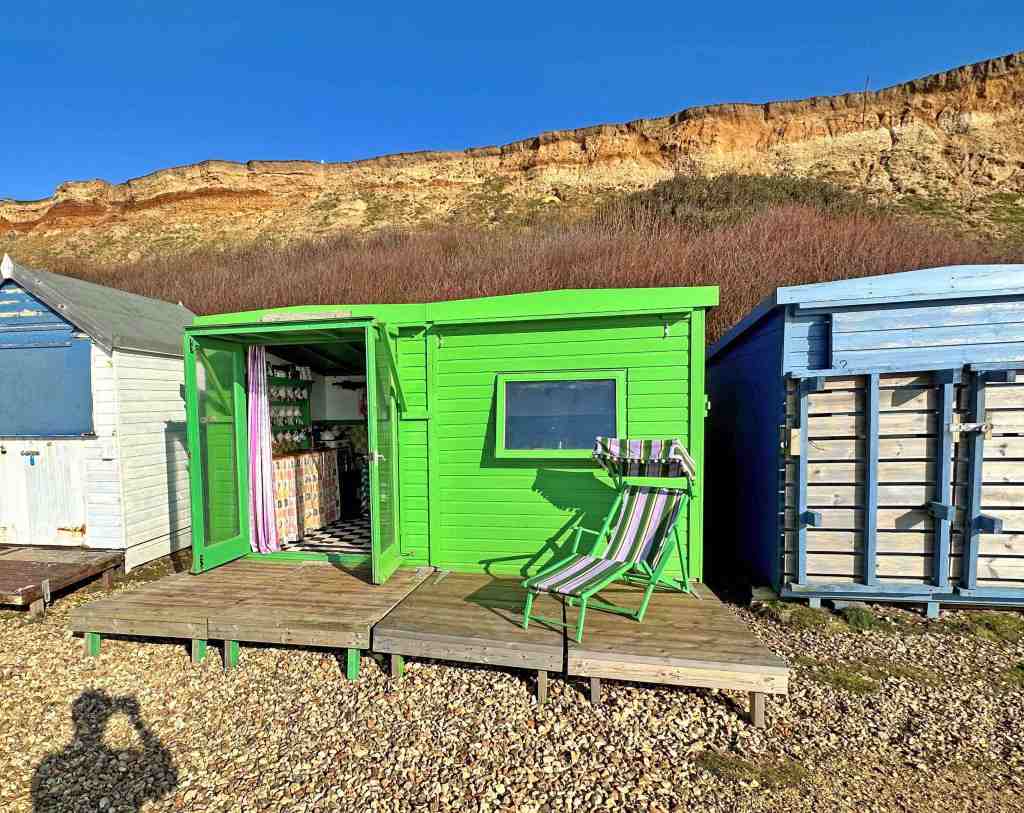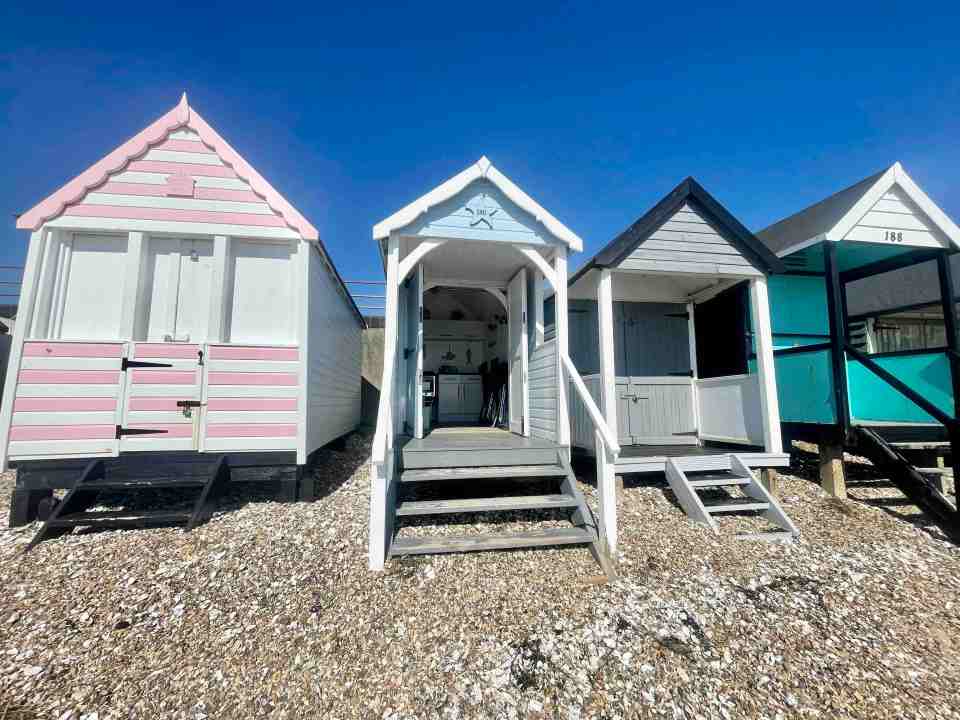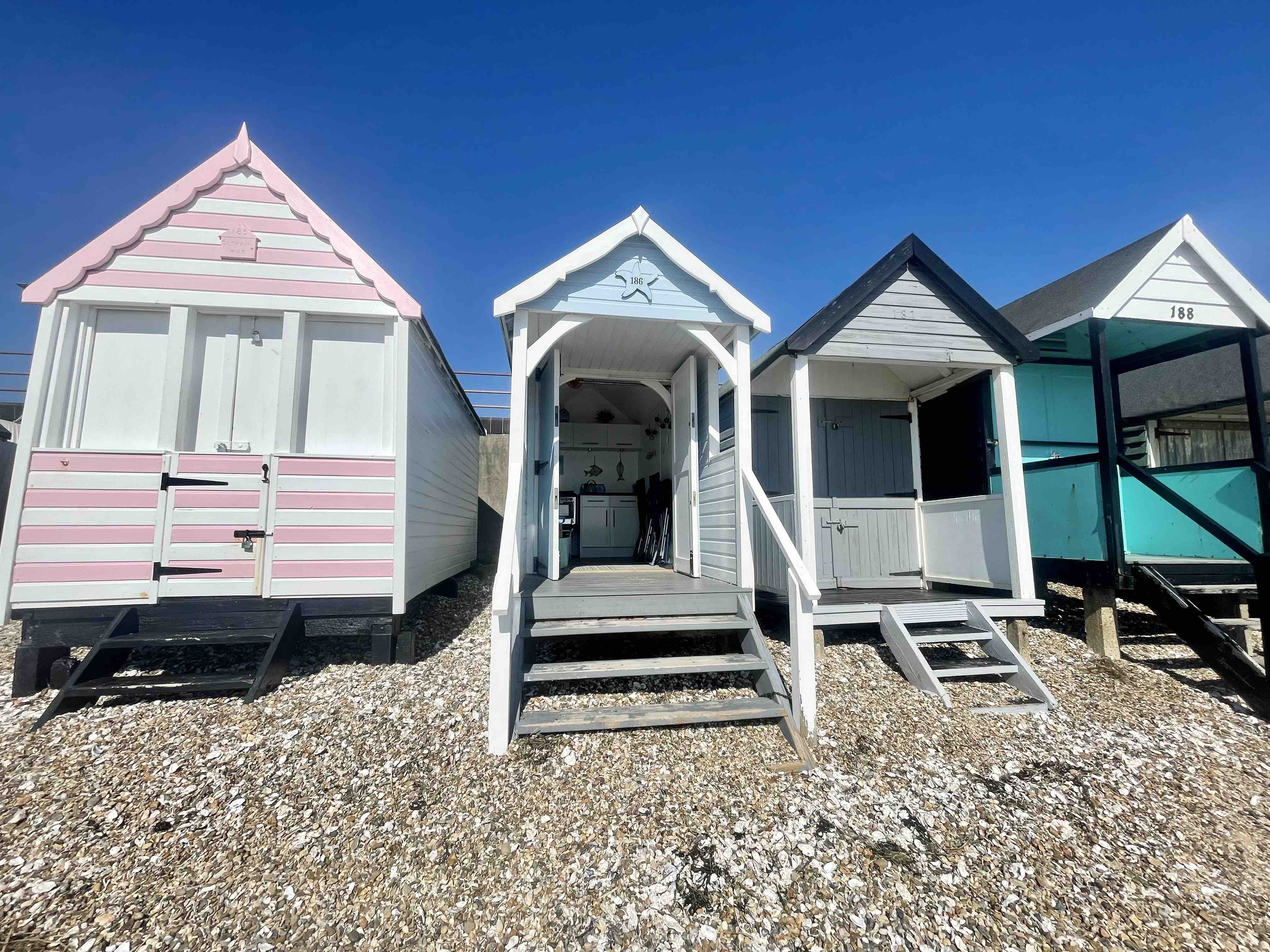They are expensive to maintain, plagued by tourists and influences seeking picture-postcard holiday snaps and cost more per square foot than houses in some of London’s most affluent neighbourhoods – despite lacking basic amenities such as running water. And yet such is the allure of the traditional seaside beach hut that, amid an otherwise shaky housing market, prices for these modest timber shacks just keep rising.
According to research by Moverly, which provides digital home information packs, the average asking price of a beach hut in England stands at £49,290 – up 43 per cent in the past year. In Dorset prices are up 101 per cent to more than £120,000. Prices jumped 77 per cent in West Sussex during the same period, and in Norfolk there has been a 48 per cent annual growth.
Huts on the south coast can sell for more than £1,100 per square foot – the same amount buyers are paying per square foot for a home in Hampstead
While data like this does need to be taken with a pinch of sand (asking prices may be buoyant, but a property is only worth what a buyer will pay for it), in seaside resorts around the country estate agents talk of runaway demand as the summer holiday season approaches.
Ethan Livermore, branch manager of Hunt Roche estate agents in Thorpe Bay, Essex, holds a waiting list of buyers desperate to pick up a beach hut. ‘People always scoff when you hit a certain figure, but prices keep on going up,’ he says. ‘In 2000 we sold a hut for £70,000 and people couldn’t believe it. Now we are selling them for £100,000-plus. It is a hell of a lot of money, but people absolutely love them.’ On his books at the moment is this compact hut with kitchenette and Thames Estuary views for offers over £95,000.
Famous fans of beach huts include the late Queen, who owned one on Holkham Beach in Norfolk – close to Sandringham – until it burned down in 2003. Suggs, lead singer of Madness, has a hut in Whitstable, Kent, and artist Tracey Emin sold her Whitstable hut to Charles Saatchi for £75,000. Even the hellraising Keith Richards is rumoured to have bought himself a hut on the south coast near Chichester, West Sussex. Last year Griff Rhys Jones threw his weight behind a campaign to save a line of Victorian cabins in Felixstowe, Suffolk, believed to be the oldest in the country, from being relocated, describing beach huts as ‘part of the British seaside experience’.
Beach huts were made popular by modest Victorian day-trippers. As the railway network spider-webbed its way across the country, the masses suddenly had easy access to the seaside. Visitors were keen on the health benefits of bathing but less enthusiastic about the idea of disrobing in public. Bathing machines were the perfect solution. Swimmers could get changed inside these huts on wheels, which would then be rolled out into the water – Queen Victoria even had one installed at Osborne House, her summer home on the Isle of Wight.

Over the years these shows of modesty were considered less necessary and old bathing machines were parked up wherever there was space, evolving from ambulant changing rooms for the wealthy into all-day hangouts for the working classes who couldn’t afford bricks and mortar holiday homes. Other beach huts were created out of repurposed fisherman’s sheds. There are currently some 20,000 beach huts in the UK, according to the Bournemouth Beach Hut Association.
In Essex most of Ethan Livermore’s buyers are locals – older couples looking for seaside fun with the grandchildren, young families or retirees who just love the whole beach hut vibe. Heather Hilder-Darling, owner of Callaways estate agents in Hove, adds another category. ‘A lot of my buyers have memories of having visited beach huts in their childhoods, and they return as adults to buy,’ she says.
Nostalgia is a big part of the beach hut appeal. Over the years there have been occasional attempts to modernise the beach hut aesthetic. New Forest Council toyed with modernism by building a line of concrete huts at Milford on Sea after its original timber huts were decimated by a storm in 2014. But for the most part the stock of beach huts is exactly as you would imagine: small, squat, pitched roofed buildings, a cross between a potting shed and a sentry box, painted in pastel colours. Buyers pay premium prices for a beach hut for the same reason they will pay over the odds for a chocolate-box cottage.

Decor wise, there is nothing minimal or hip about beach hut style. Retro candy stripes or nautical blue and white are almost compulsory, often accessorised by bunting and seaside themed tchotchkes. Some huts are miniscule, just large enough to store sun loungers and surf gear. Others are large enough to contain kitchenettes and day beds.
Hilder-Darling saw a surge in interest in beach huts during the pandemic. ‘They suddenly became everyone’s go-to mental health place,’ she said. ‘There is something about a beach hut – they just make you smile.’ This resulted in some significant price growth on the south coast – huts which were selling for £30,000 to £32,000 in 2021 were suddenly fetching £40,000, which is not bad for a 6ft by 6ft timber building. In fact, at more than £1,100 per square foot that’s the same amount buyers are currently paying per square foot in Hampstead (£1,105, according to house price analyst LonRes).
Most councils do not permit owners to stay in their huts overnight. In Barton on Sea, Hampshire, this 13ft 8in by 8ft 9in beach hut which cannot be slept in or rented out is on the market for £79,000. There are a few exceptions, like the huts at Mudeford, near Christchurch, Dorset – but a ‘front line’ hut with mod cons such as solar panels and a bathroom at Mudeford could cost you £400,000-plus.

Other costs include licence fees payable to local councils. Prices vary, but New Forest District Council charges local hut owners from just over £500 to more than £800, depending on location and hut size. Non-locals pay from around £750 to £1,000-plus.
On top of that there is the cost of keeping your beach hut looking tip-top. ‘One thing with a beach hut is the maintenance can be quite expensive,’ says Hilder-Darling. ‘They are made of wood and we have all the salty sea air and winter winds.’
Another downside is that tourists, particularly from overseas, adore beach huts which means that owners have to put up with a constant line of people waiting to be photographed in front of their huts. ‘It is rare to go down to the seafront and not see somebody posing,’ says Hilder-Darling. But perhaps that’s a small price to pay for your own house on sand.







Comments